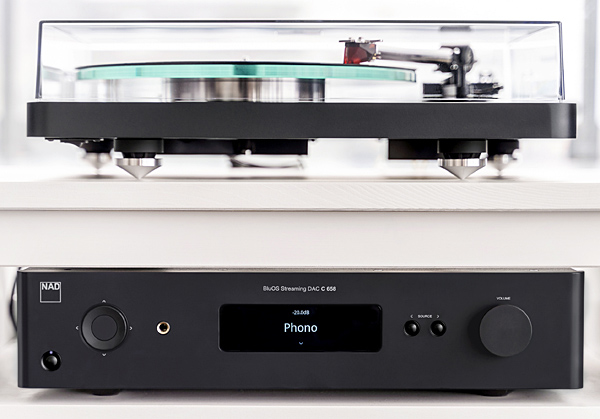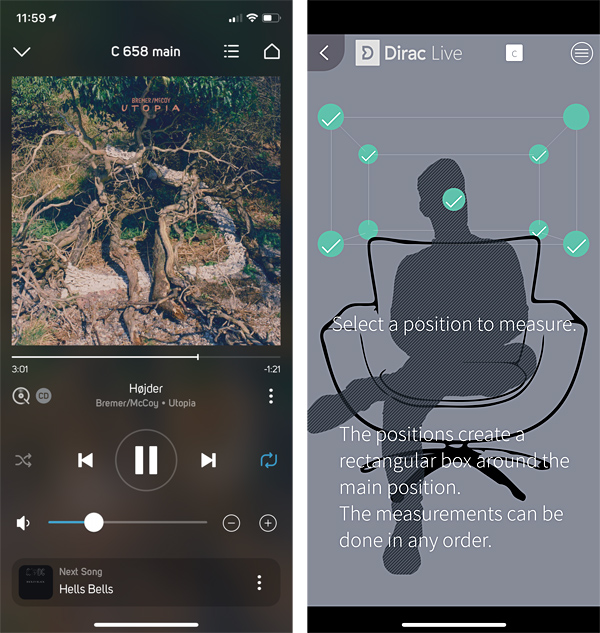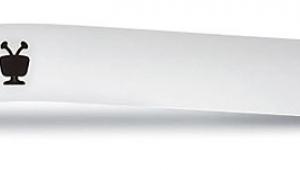Only if you like bleeding from your ears. This unit is the very definition of digital glare. Even my non-critical listening wife couldn't stand the sound of this for more than a few minutes. I ran this in for a week solid before giving it a hard listen. One of the worst pieces of audio gear I've ever owned. It was traded in on a Teac NT-503 which was worth far more than the $300 price difference. Really have to wonder about this publication at times. Do you guys need your hearing checked or is it that everything from NAD always seems to get a pass?
NAD C 658 Network Audio Player/Preamplifier Review

AT A GLANCE
Plus
Great sound quality
Onboard Dirac Live room correction
Well-designed control app
Minus
Overly busy remote control
THE VERDICT
NAD's streaming preamp brings vinyl playback and Dirac Live room correction to the mix for a very complete package at an affordable price.
I'm no stranger to the network audio player/preamplifier category, having evaluated two such specimens in 2019: Cary Audio's DMS-550 and Simaudio's Moon 390. These components act as a hub for switching a range of digital and analog sources, along with streaming music from online services and local networked storage. The DMS-550 and Moon 390 impressed me with their versatility and sound quality, but at $5,000-plus, both are priced outside the range of an average listener. Fortunately, other options exist such as the NAD C 658, a $1,649 network audio player/ preamplifier aimed at audiophiles on a budget. How does the C 658 hold up against the pricier models? Let's give it a listen.
Features
NAD categorizes the C 658 as a BluOS Streaming DAC. (BluOS is a high-res-capable multiroom music streaming protocol used in select NAD components and in products from its sister brand Bluesound.) The C 658 uses an ESS Sabre 32-bit/384kHz digital-to-analog converter to process incoming digital signals, and it can decode MQA to extract high-res audio from Tidal streams and other MQA sources. Network connections include Gigabit Ethernet and dual- band Wi-Fi. NAD's network audio player/preamplifier also features both AirPlay and aptX HD Bluetooth for streaming from a phone or tablet, and out to BT headphones.

The feature set listed above would be plenty for most components, but there's even more going on with the C 658. Along with its streaming functions, NAD's preamplifier has inputs for multiple digital and analog sources, along with a built-in moving magnet phono stage. Dirac Live room correction is onboard, with an option to upgrade to an enhanced, full- frequency version (the included "lite" version of Dirac Live tops out at 500 Hz).
NAD has always brought a no-nonsense design sensibility to its products, and this one is no exception. Encased in black aluminum, the C 658 sports a stripped-down front panel featuring a volume adjustment knob, source select and power on/off buttons, and a control pad to navigate menus via the C 658's LCD display. There's also a 1⁄4-inch output jack for headphones listening.

Back panel connections on the C 658 include a pair each of coaxial digital, optical digital, and stereo analog RCA inputs, plus a phono input for a direct turntable hookup. There are balanced XLR and RCA preamp outputs for an outboard amplifier, as well as stereo subwoofer outputs. Other ports include USB type-A for connecting an external drive, IR in/out, and 12-volt DC trigger in/out. Custom integration support on the C 658 extends to Crestron, Control4, URC, RTI, Lutron, and others.
Two unused slots labeled MDC (for Modular Design Construction) on the C 658's back panel are unique to the NAD universe. These can be used with optional modules that add features such as HDMI inputs. And since NAD refreshes its MDC module lineup on a regular basis, the offerings should keep step with HDMI version changes.
NAD bundles a perfectly functional remote control with the C 658 that can be used to operate other sources such as one of the company's CD players or AM/FM tuners (yes, they also make that stuff). Consequently, the keypad is fairly packed with buttons, although the ones you'd use most often like volume up/down are centrally located for easy access.

Though I appreciated having a hardware remote nearby, I mostly used NAD's BluOS iOS/ Android app to control the C 658. This provides independent control of streaming to multiple BluOS devices, along with basic source switching and volume adjustment. It also provides audio configuration options such as speaker setup for single- or dual-subwoofer systems (with variable cross- over selection in 10 Hz steps from 40 to 200 Hz), gain adjustment for volume levelling of full albums or tracks, and switching your Dirac Live filter presets (or shutting Dirac Live off altogether). Otherwise, the BluOS app is very easy to use and lets you easily navigate playback from streaming services including Tidal, Qobuz, Spotify, Amazon Music, HDtracks, Deezer, Napster, TuneIn radio, and iHeartRadio.
I hooked the C 658 up in a system consisting of a NAD C 268 stereo amplifier that the company sent along for use during testing and Polk Audio L800 tower speakers. While the C 268 is conservatively rated for 80 watts continuous output into 8 and 4 ohms (20 Hz-20 kHz at 0.03 percent THD, both channels driven), it easily drove the full-range Polk Audio towers to a satisfactory listening level. Sources included a Panasonic DMP-UB900 Ultra HD Blu-ray player for CD playback and a Pro-Ject Debut turntable with Clearaudio Aurum Beta/S moving magnet cartridge for vinyl. The music streaming services I used for my testing were Tidal Hi-Fi, Qobuz Studio, and Amazon Music HD.
After connecting the C 658 to my home network using a wired Ethernet connection, I fired up the BluOS app, which immediately recognized the NAD streaming preamp as a "player." I next customized the labeling of my connected sources to read "CD Player" and "Pro-Ject Turntable," and then configured streaming services by entering email and password information. It was extremely simple to get the C 658 up and running, and I experienced no crashes, hiccups, or other headaches.
- Log in or register to post comments



who thinks that power cables make a difference?
Maybe you should have your head checked. Better have your wife do the same...
I've owned the C658 for 3 months and it sounds great, especially after Dirac live full calibration. And it does support Roon endpoint.
Mine is hooked to dual Hypex NC400 power amps and Focal Aria 936 speakers. I bet you couldn't tell the difference between the C658 and the Teac 505 in a blind test...

The forums are full of comments about its "bright", "edgy", "digital", "analytical" sound. Its fake balanced outputs were the real kicker. Judging by your other gear I can see how this is what passes as music to you.

What speakers are you listening to using the NAD? ......... May I suggest listening to Revel Performa F208 ($5,000/pair, reviewed by Stereophile)? :-) ........

My current gear is old but very high end. Krell Class A driving Martin Logan Prodigy speakers. This has satisfied me for the better part of fifteen years but we no longer need a house as big as we have since my kids are grown and gone so I would like to downsize to a system better suited to a smaller room. The Revels you mention have been on my short list since they came out. The Teac NT-505 I replaced the NAD with is in a whole another world. Dual mono, a real balanced chassis, flagship DAC. The NAD was painfully fatiguing to listen to for more than a short time. I feel as though they tried to do do too much at a reduced cost and the corner cutting is obvious. I can't remember a time when I owned an audio component that sounded worse on its balanced outputs than on its single ended outputs, which is a pretty good indication that it's not truly balanced. A single cheapo DAC vs two flagship DAC's. No contest.

If you are willing to spend the money, and, if your new listening room allows for the bass, you could also listen to the top Performa model F328Be ($15,000/pair) ....... You could also possibly use your Krell amplifiers :-) ........

But the space heater Krells probably aren't.

If you don't want to use the Krells, you could consider Parasound JC5 ($6,000) or Rotel Michi S5 ($7,000) ........ They could drive the F328Be :-) ........

You owe it to yourself to check out PS Audio's Stellar Amps. The S300 Stereo is dual mono amps sharing a single chassis and power outlet and puts ou 140/270 watts into 8/4 ohms. The M700 and M1200 are full mono amps in two chassis. The M700s have class A solid state input stage like the S300. The M700s put out 350/700 watts into 8/4 ohms. The far pricier M1200 monos feature a tube input stage and put out 600/1200 watts into 8/4 ohms. All three amps are notably smooth and natural, without the barest trace of Class D high treble glare, which prevents me from running screaming from the room. All three amps use B&O Icepower modules. These are identical to what they use in their $90K flagship powered speakers which use Scanspeak beryllium domes. PS Audio uses their proprietary class A gain stages which are smooth as silk without losing top end detail and frequency extension. You'd have to spend well into five figure territory to best them. I personally have the S300 and it puts my butter smooth sounding 1990's Proceed (made by Levinson) amp to absolute shame. And because it's uses class D amps in the output stage, it runs cold to cool, 99% of the time. My current hungry Elac Adante's love the amp. So do my Seas Idunn loudspeakers that have an unforgiving flat response from 40Hz to 25KHz which ruthlessly exposes any amp's top end glare and sibilence. Check 'em out. You can even order direct with free return shipping if you don't like them.

Sorry for not mentioning ....... My above comment was meant to be as a reply for brenro's comment :-) .........

Other NAD and Blue OS products support Roon, I'm currently using an excellent Lumin D2. Yes I know the NAD has more features but I would be interested in a comparison.
Perhaps a firmware upgrade could solve the deal killer for me.


The C658 does support Roon, as do all BluOS devices. The C658 has not yet been certified by Roon so is not listed on their site.





































































